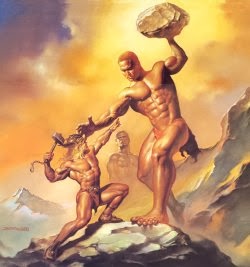In recent months, the Mombasa Republican Council (MRC) has been in the news quite a bit. The MRC is seeking secession - or is it independence? - for a chunk of coastal Kenya.I am not interested in whether the MRC have a case or not. Rather, I have been fascinated by the business of secession (yes, it is political business) for many years, especially the factors that determine whether it fails for succeeds.
East Africa is interesting, because it seems the ripe region to set up secessionist shop. It has produced 99 per cent of Africa breakaway states/territories of the last 25 years: Eritrea, South Sudan, Puntland and Somaliland. Secessionist sentiment is up and about in Zanzibar, Darfur region of Sudan, the Ogaden province of Ethiopia, and in Democratic Republic of Congo.
These cases tell us that secession is very expensive business. It only comes cheap when it is “opportunistic” secession; as in the case of Somaliland, and Puntland (which has not said it intends to break away permanently) where a region moves off on its own because the central government has collapsed and can’t keep it in the fold.
Otherwise secession in all other cases in our region has been won through the barrel of the gun. South Sudan became independent after more than 20 years of war in which 2.5 million were killed. Eritrea won back its statehood after a 27-year war, part of the “Ethiopian Civil War” in which at least 1.4 million were killed. In Nigeria, the Biafra war last just three years, and ended in failure. In that short period, more than 2 million people died!
So it seems that because you will, anyway, lose more than a million people fighting to be independent, secessionist folk need to be at least three million. That number ensures that you are able to produce enough people to replenish the ranks of the fighters, and to have the civilian infrastructure to support the campaign, without everyone being killed off.
If you are to have an independent state, you need warm bodies to populate it. It makes no sense if they are all dead at the end. Going by this, the picture is not very bright for the MRC. Someone who is knowledgeable about Coastal Kenya tells me the “MRC base is less than 500,000”. Those are terrible numbers to work with.
The second factor necessary for successful secession is history. You need to have a good or emotional story. Either your territory was independent before and had a proud past, like Eritrea; or independent like South Sudan, but also with a highly emotional narrative that grabs international attention—a “Muslim” north oppressing a “Christian” south; or a racist northern Arab elite tormenting a large “black” southern politician. The differentiations are nonsensical in strict scientific terms, but nevertheless they evoked a lot of emotion.
The MRC’s strongest card is marginalisation of the coast, but the coastal strip doesn’t have a sexy history and does conjure up an emotional modern-day narrative.
Then, successful secessionists need the clock. All successful secessions have taken more than 20 years of struggle. This creates a large number of refugees and exiles that scatter to the corners of the world and create the bodywork that enables secession to succeed. The Eritrean Diaspora was successful enough, it was able to raise money to fund the war by the Eritrean Peoples’ Liberation Front (EPLF) for years.
The South Sudanese were able to mobilise rich conservative Christian constituencies in the west to support their cause, and to draw in countries like Yoweri Museveni’s Uganda to give the Sudan Peoples’ Liberation Army military support.
The MRC base of “less than 500,000” is not enough to establish a critical Diaspora constituency. This doesn’t mean they should give up. Rather, the MRC should do what all groups that are hopeless outnumbered, outgunned, and out-moneyed do; negotiate, persuade, charm, bribe, and work the system to your advantage.
No man understood this better than the African-American civil rights leader Martin Luther King (MLK) when he called for non-violent protest. The radicals mocked him, and he was assassinated. But black America lived to fight another day. In 2008, America elected Barack Obama, its first African-American president, 40 years after the death of MLK. This is where the violent and non-violent takes are similar - they both take forever.
Mr Onyango-Obbo is the Executive Editor of the Nation Media Group’s Africa and Digital Media Division
Add this page to your favorite Social Bookmarking websites

No comments:
Post a Comment